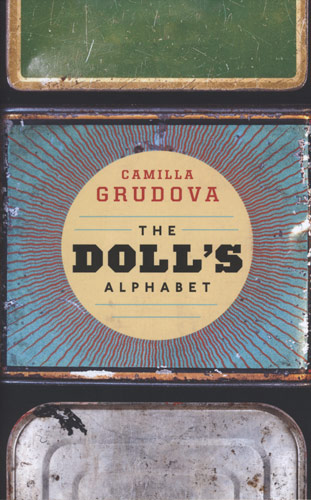The Doll’s Alphabet
Camilla Grudova’s first collection, The Doll’s Alphabet, is causing a literary stir. It has been compared to the writing of Margaret Atwood, Angela Carter, and Franz Kafka—one of the authorial inspirations for the collection. Grudova’s stories inhabit a time and space that is unclear to the reader, but never so far off to be unbelievable. Her writing is haunting and humorous, and the attention to gender dynamics adds a layer of truth to these dark tales.
Camilla Grudova’s first collection, The Doll’s Alphabet, is causing a literary stir. It has been compared to the writing of Margaret Atwood, Angela Carter, and Franz Kafka—one of the authorial inspirations for the collection. Grudova’s stories inhabit a time and space that is unclear to the reader, but never so far off to be unbelievable. Her writing is haunting and humorous, and the attention to gender dynamics adds a layer of truth to these dark tales.
The opening story, “Unstitching,” tells the tale of a woman finding her true form. Greta realizes she can unstitch her outer layer one morning, and, so, she steps out of her shell to embrace her new life. Her husband is horrified, but when other women see her, they unstitch themselves as well, therefore shedding the expectations placed upon them as women. Sewing machines became a thing of the past; the idea of stitching something together was repressive. “Exhibitions of sewing machines ‘throughout the ages’ were put on and greatly enjoyed, reminding women of their evolution toward unstitching consciousness.”
“The Mermaid” is a surreal tale that also explores gender and expectations as it uses traditionally female names for all its characters. Main character Evelyn kidnaps the titular mermaid and delivers her to his brother, Vyvyan. Vyvyan, a grotesquely large man, has no interest in the fish-headed woman who stands in the corner of his dark room. But the mermaid is dazzled by silver things, and has a knack for escaping from locked rooms—which annoys Evelyn’s wife. Eventually they must make a decision on what to do with the creature they’ve locked in their house.
In “Edward, Do Not Pamper the Dead,” Edward falls in love with Bernadette because she works at a variety shop—he hopes she would bring surprises home from work with her. He asks her to move in and she concedes. Bernadette wants a child, but Edward doesn’t, and he steals money from her savings to deter her from feeling financially stable. Eventually, Edward dies, and Bernadette must deliver his newspaper, tea, and meals to the funeral home. But the title holds a warning: “Do not pamper the dead,” and we readers are prompted to question how much of ourselves we’re willing to give.
Paintings that blink, lunchboxes full of human remains, and wax figures recreating brutal atrocities riddle the pages of “The Moth Emporium.” The unnamed narrator meets her future husband for the first time when he opens the curtain to her dressing room in a costume shop at seventeen. It takes five years for her to go back. After a marriage and a baby, her husband reveals that he and his previous wife had agreed to display some historical wax figurines in the shop. The narrator is horrified when the figures—depicting a rape and murder—are set up everywhere, including their bedroom, showing how we never truly know someone until they choose to reveal more.
The Doll’s Alphabet is equal parts whimsical and dark, reminding readers with each turn of the page that a fairy tale is only ever one sentence away from becoming a nightmare. Camilla Grudova, in her lack of specific time and place, puts an everlasting spotlight on the “confines of how men and women operate and relate to each other.” Her stories easily navigate the world on the other side of the mirror. This collection will undoubtedly make its way to the top of must-read lists everywhere.





